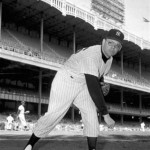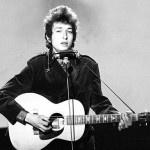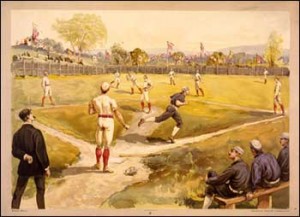Ryne Duren and the Integration of Minor League Baseball
 Rinold George “Ryne” Duren, one of Wisconsin’s most famous baseball pitchers, passed away at his Florida winter home on January 6, at age 81. Born in Cazenovia, Wisconsin in 1929, Duren was not permitted to pitch while a high school student out of fear for the safety of the other players; however, he did star in the amateur adult Sauk County League, where he averaged 22 strike outs per game.
Rinold George “Ryne” Duren, one of Wisconsin’s most famous baseball pitchers, passed away at his Florida winter home on January 6, at age 81. Born in Cazenovia, Wisconsin in 1929, Duren was not permitted to pitch while a high school student out of fear for the safety of the other players; however, he did star in the amateur adult Sauk County League, where he averaged 22 strike outs per game.
He signed a professional contract with the St. Louis Browns in 1949, and later pitched for seven different major league teams between 1954 and 1965. He is best remembered as a star relief pitcher for the New York Yankees from 1958 to 1961. In that role, he was instrumental in the Yankees victory over his home state Milwaukee Braves in the 1958 World Series.
Although his career statistics were fairly modest, a 27-44 won-lost record with 57 saves and a life time ERA of 3.83, Duren was well-known to baseball fans of the late 1950’s and early 1960’s. Perhaps the hardest thrower of that era and one of the first pitchers to have his fastball clocked at over 100 mph, Duren was a three-time all-star who averaged 9.6 strikeouts and 6.0 walks per nine innings for his career.
In 1958 and 1959, he was one of the best relief pitchers in major league baseball, but in most seasons, his lack of control limited his effectiveness. In 1960, for example, he struck out an average of 12.3 batters per nine innings while holding opposing batters to a .160 batting average. However, his lack of control, which led him to walk an average of one full batter per inning, caused his earned run average to balloon to 4.96. Even though he pitched relatively few innings each year, he also several times ranked among league leaders in hit batsmen and wild pitches.
Although he was an accomplished pitcher for several years, Duren was best known as the original “Wild Man” relief pitcher. (He was the prototype for the Charlie Sheen character in the movie Major League.) Although he was an athletic 6’2”, 190 lbs., Duren had extremely poor eyesight (20/200) and wore coke bottle thick eye-glasses. He also had a severe drinking problem and frequently pitched while badly hung over and occasionally while intoxicated. The combination of his wicked fastball, his lack of control, the coke bottle glasses, which he occasionally chose not to wear, and his well known penchant for drinking made him a very intimidating figure.
Duren’s inspirational autobiography, I Can See Clearly Now (2003), tells the story of his triumph over alcoholism in the years following his retirement from baseball.
What has not been mentioned in any of the tributes that have appeared since his death was Duren’s role in the integration of minor league baseball in the American South in the early 1950’s. In his book Brushing Back Jim Crow: The Integration of Minor League Baseball in the American South, historian Bruce Adelson tells several stories about Duren coming to the defense of his black teammates.
In 1955, Duren was pitching for the San Antonio Missions of the Texas League. Even though the Texas League had been racially integrated in 1952, it still had very few black players and included several all-white teams. Many of the league’s fans clearly resented racial integration. That year, Shreveport Sports manager Mel McGaha regularly ordered his pitchers to throw at black batters.
According to Duren’s San Antonio teammate Willie Tasby, a black outfielder, Duren would retaliate on Tasby’s behalf by throwing 100-mph fastballs at Shreveport batters. Apparently, Duren would sometimes take off his glasses and throw at Shreveport batters in the on-deck circle so that they would not be able to take first base when they were hit by his pitch. Apparently, this tactic worked, and white pitchers stop throwing at Tasby. The year before, Duren had also reportedly gone out of his way to befriend black San Antonio teammate Joe Durham who was not permitted to room or eat with his teammates in the Jim Crow South.
Playing minor league baseball in the South in the early 1950’s was no picnic for black baseball players, but the existence of sympathetic white teammates like Ryne Duren made it more bearable, and safer.
Duren spent most of his life in Wisconsin and his name appears on the Wall of Honor at Miller Park. Hall of Famer Ryne Sandburg, born in 1959 in Spokane, Washington, during Duren’s best season, was named after Duren by his Yankee-fan father.


